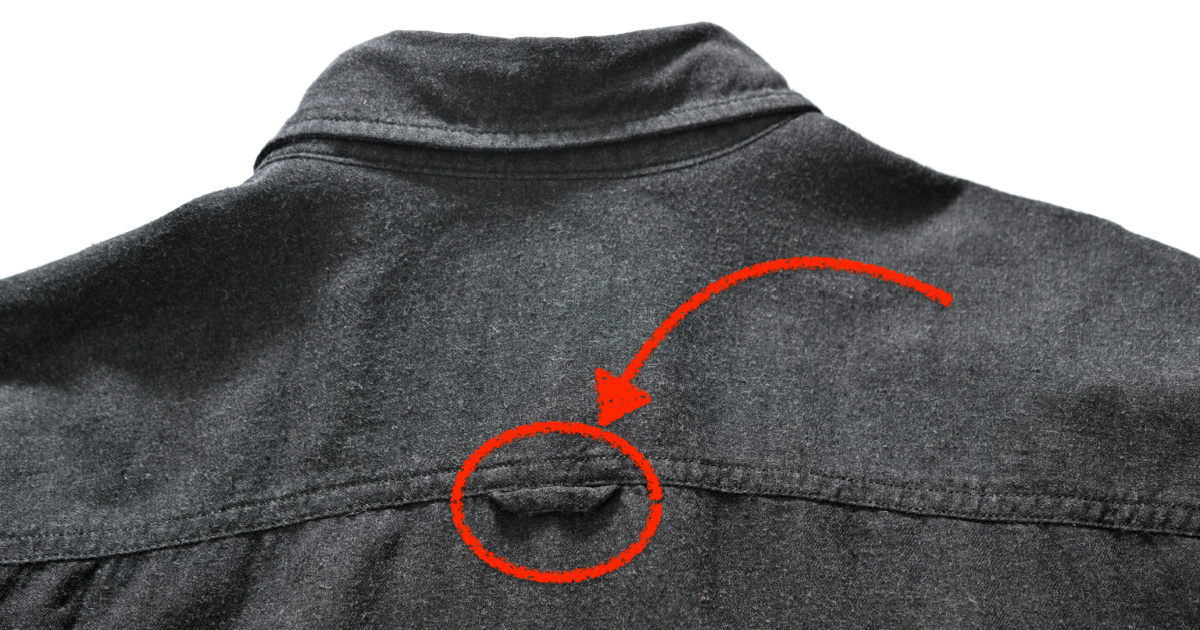Button-down shirts are a staple in almost every wardrobe, but there’s a small detail on the back that often goes unnoticed – the loop. This tiny loop, commonly referred to as the “locker loop,” has a rich history that dates back to its practical origin in the military, evolved with Ivy League influence, and continues to serve as a subtle fashion statement today. While its functionality is often forgotten in modern fashion, understanding the purpose of the locker loop gives us insight into both fashion history and contemporary trends.
The Origin of the Locker Loop: A Practical Necessity
The locker loop was initially introduced as a practical solution for sailors. In the early 1900s, sailors in the Navy had limited storage space for their uniforms, and it wasn’t always easy to keep them wrinkle-free. To solve this problem, they added a loop to the back of their shirts. This loop allowed sailors to easily hang their shirts in their lockers, keeping them neat and preserving their shape. This feature was designed purely for convenience, not style.
This humble, functional detail would go on to have an enduring impact, but its journey from practicality to fashion began in the 1960s. During this time, the locker loop found its way into civilian life. The renowned clothing manufacturer GANT played a significant role in this transition. They marketed the loop as a way to help Ivy League students keep their shirts wrinkle-free in their lockers, and soon, the trend became ingrained in preppy fashion. The locker loop quickly became a recognizable feature associated with classic American style, especially among Ivy League students.
 Source: Shutterstock
Source: Shutterstock
Locker Loop and Ivy League Influence
As the popularity of Ivy League style grew, the locker loop became a symbol of sophistication, refinement, and quality. Students at prestigious universities embraced the loop not only for its practicality but also as a mark of good taste. It was a subtle yet powerful design element that reinforced the image of the well-dressed, well-groomed student.
The locker loop’s influence didn’t stop at Ivy League students. Over time, its status as a fashionable detail made its way into mainstream fashion. Iconic brands like Sero, Wren, Creighton, and Eagle adopted the locker loop, further cementing its role in fashion history. The locker loop was no longer just a functional feature – it had evolved into a symbol of preppy and classic American style.
Interestingly, the loop also became a playful part of youth culture in the 1960s. It was said that male students would remove the loop from their shirts as a way to signal a change in their relationship status, and young women would reciprocate by wearing their partner’s scarf. This seemingly innocent tradition, however, sometimes took a mischievous turn, with some individuals playfully yanking the loops off their classmates’ shirts.
The Locker Loop Today: A Fashion Nostalgia
In modern fashion, the practical need for the locker loop has largely disappeared. With the advent of hangers and better garment storage solutions, the loop’s original function is no longer necessary. Despite this, the locker loop remains a popular feature on button-down shirts, serving as a nostalgic nod to its history.
Today, retailers like Ralph Lauren and J.Crew continue to offer shirts with locker loops, allowing fashion enthusiasts to embrace this subtle yet significant element of past style. The locker loop, though no longer a functional tool for hanging shirts, endures as a design feature that connects modern fashion to its roots in the Ivy League.
 Source: Shutterstock
Source: Shutterstock
Customization and Personal Preference: Tailoring the Locker Loop
For those who have strong opinions about the locker loop—whether they love it or prefer to do without it—there’s good news: tailoring options are available. Many tailors can easily remove or add the loop, allowing wearers to customize their shirts based on personal taste. Whether you prefer to embrace tradition or opt for a more minimalist look, the locker loop offers a flexible option that can align with both historical fashion and modern preferences.
The Legacy of the Locker Loop in Men’s Fashion
The locker loop represents a fascinating evolution in men’s fashion, from its origins as a functional solution in the Navy to its iconic status in Ivy League and mainstream fashion. While it may no longer serve its original purpose, the loop serves as a reminder of the connection between practicality and style in fashion’s development. When you button up your shirt, consider taking a moment to appreciate this small yet significant feature that encapsulates a rich history.
For more fascinating stories on fashion, history, and cultural insights, explore the following articles:



